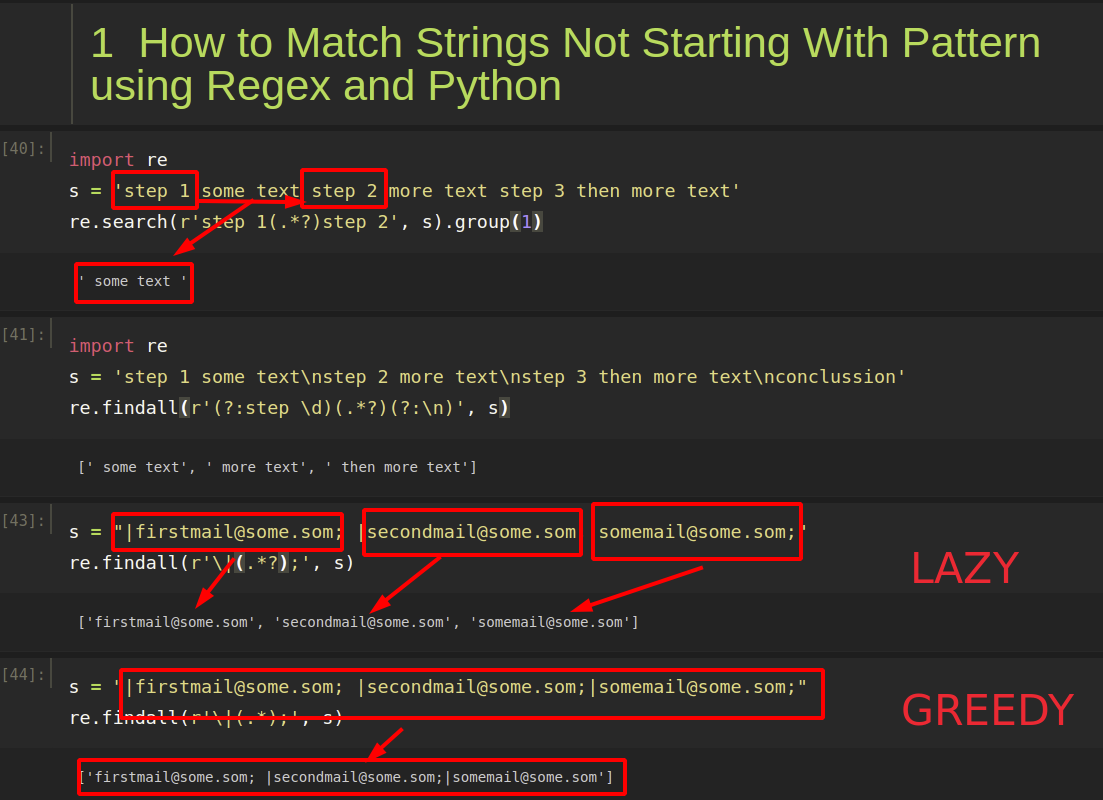To match any text between two strings/patterns with a regular expression in Python you can use:
re.search(r'pattern1(.*?)pattern2', s).group(1)
In the next sections, you’ll see how to apply the above using a simple example.
In this example we are using a Kaggle dataset. If you like to learn more about how to read Kaggle as a Pandas DataFrame check this article: How to Search and Download Kaggle Dataset to Pandas DataFrame
Step 1: Match Text Between Two Strings
To start with a simple example, let’s have a the next text:
step 1 some text step 2 more text step 3 then more text
and we would like to extract everything between step 1 and step 2. To do so we are going to use capture group like:
import re
s = 'step 1 some text step 2 more text step 3 then more text'
re.search(r'step 1(.*?)step 2', s).group(1)
result:
' some text '
How it works:
step 1- matches the characters step 1 literally (case sensitive)(.*?)- matches any character between zero and unlimited times expanding as needed (lazy)step 2- matches the characters step 2 literally (case sensitive)
Non lazy search
The previous example will stop until it finds text which satisfies it. If you like to extract:
some text step 2 more text
Then you need to change the search to:
re.findall(r'step \d (.*) step \d', s)
Step 2: Match Text Between Two Patterns
Now let's say that you would like to match a pattern and not fixed text. In this example we will see how to extract step followed by a digit:
import re
s = 'step 1 some text\nstep 2 more text\nstep 3 then more text\nconclusion'
re.findall(r'(?:step \d)(.*?)(?:\n)', s)
So having the next text:
step 1 some text
step 2 more text
step 3 then more text
conclusion
We will extract:
[' some text', ' more text', ' then more text']
How does it work?
(?:step \d)- Non-capturing group -?:- it will be matched but not extractedstep \d- matches the characters step literally (case sensitive) followed by a digit (equivalent to [0-9])
(.*?)- 1st Capturing Group - capture anything lazy mode(?:\n)- Non-capturing group\nmatches a newline character
Step 3: Match Text Between Two Patterns Lazy vs Greedy
In this step we will give a more explanation to the lazy vs greedy match. The difference can be explained as:
@(.*?)@- Lazy@(.*)@- Greedy
So let say that we have a list of mails like:
If we do a greedy extraction between to strings we will get:
s = "|[email protected]; |[email protected];|[email protected];"
re.findall(r'\|(.*);', s)
result will be only 1 match from the first | to the last ;:
['[email protected]; |[email protected];|[email protected]']
While if we do a lazy search for a text between two substrings then we will get:
s = 'step 1 some text\nstep 2 more text\nstep 3 then more text\nconclusion'
re.findall(r'(?:step \d)(.*?)(?:\n)', s)
3 separate strings as:
[' some text', ' more text', ' then more text']










